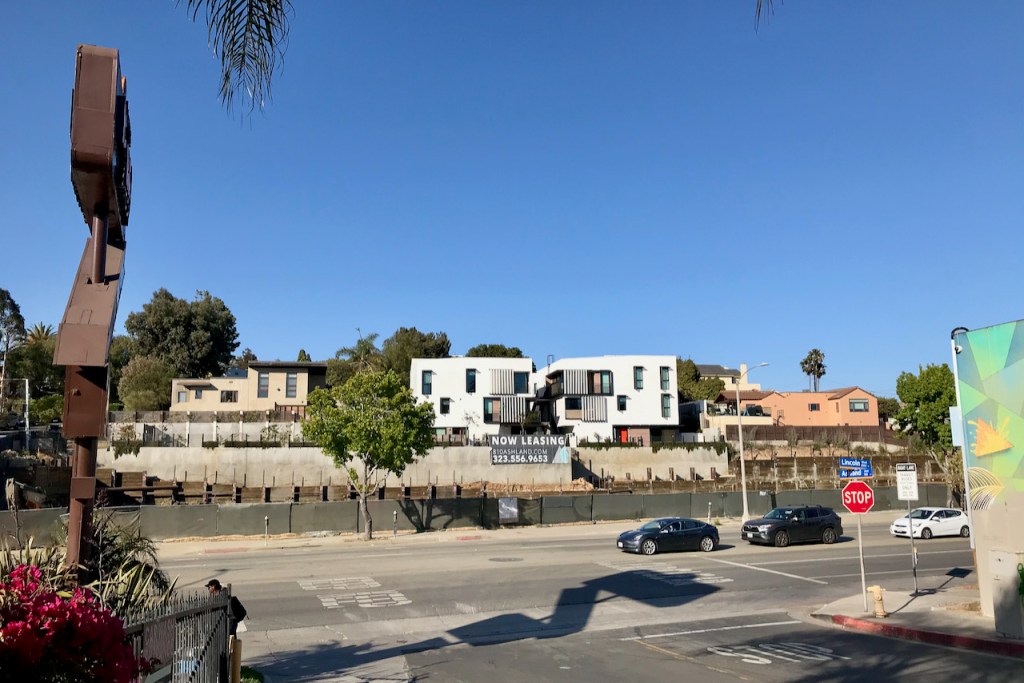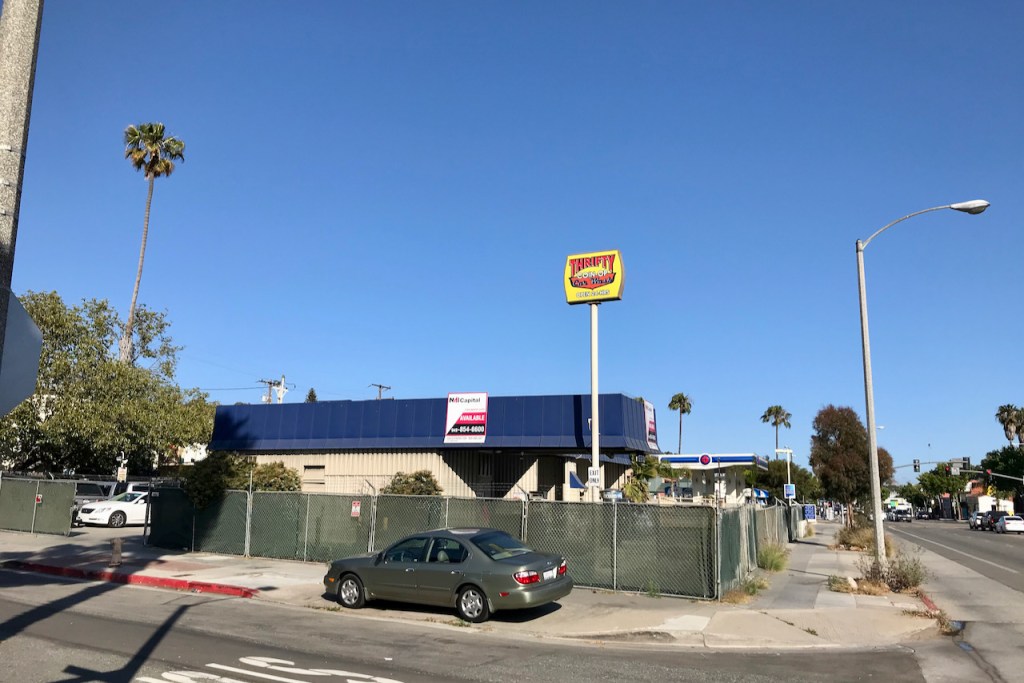As I posted June 1, in late May Santa Monica planning staff released the first draft of the City’s general plan 2021-29 housing element. The Planning Commission conducted a hearing on the document June 2 and 3 and sent comments City Council. The council will hold a hearing on the plan next week. The goal is for the council to give staff directions for preparing this draft for submission to the California Department of Housing and Community Development (HCD) for a preliminary 60-day review by July 1. The final version is due by October.
At its March 30 meeting, City Council instructed staff to prepare a “compliant” housing element—one that would satisfy the requirements of state law. These requirements involve not only allowing and planning for Santa Monica’s “regional housing needs allocation” (RHNA) of 8,895 units (of which 6,168 are to be “affordable”), but also showing that Santa Monica was “affirmatively furthering fair housing” by allowing development to “overcome identified patterns of segregation.” (The “AFFH” requirement.)
Whether staff has drafted a compliant housing element, and whether the now six-member City Council votes to give staff a mandate to do so, are interlocking questions. Rhetorically, staff’s draft is compliant, but vague. I’d say the devil is in the details, but there are too few details. Much is left to later actions, such as changes to the City’s Land Use and Circulation Element (LUCE) and zoning laws, to implement wishful housing element “programs.” The council might approve a document that is purportedly compliant, but which HCD rejects.
For instance, and this is just one example, one program (Program 1.F.) is to revise the Downtown Community Plan (DCP) to support inclusionary affordable housing. The DCP was adopted in 2017 with rhetoric, backed up by questionable data analysis, that it would produce thousands of new apartments downtown of all sizes and levels of affordability. So far, however, the only projects that have been built or even permitted under the DCP standards are small, “Tier 1” projects with small units of which very few are affordable.
That the DCP would not produce much development was predicted, because of the high levels of affordable housing the DCP required in larger (“Tier 2”) developments and other costs housing developer had to assume. It may seem paradoxical, but to fix the problem and get more affordable units built, the DCP would need to be amended either to reduce the affordability load on market-rate developments (without increasing the size of the development), or to allow bigger projects with more market-rate development to offset the affordability requirement.
At the time council passed the DCP, council and staff said they would revisit the DCP if it failed to produce housing. Nothing has happened since 2017, however, except that the council tightened affordability requirements even further to make it even harder to build. Skeptics about the City’s intentions will look at the housing element’s “programs” as more dodges unless the document includes specific parameters for rezoning downtown.
Those skeptics surely exist. The Santa Monica Housing Council (SMHC), the organization that successfully sued Santa Monica in the early ’90s over inadequacies in the City’s housing element, has had its lawyers (the same firm whose fees of nearly $700,000 the City was required to pay) send letters—“shots across the bow”—to the Planning Commission detailing the many ways they see the City heading towards noncompliance. The SMHC’s critique focuses not only on the vagueness of the housing element, but also on what the lawyers see as overly optimistic projections of what might actually be built on the “suitable sites” the housing element must identify for housing growth.
To its credit the Planning Commission recognized vagueness as a problem. The unanimous comments of the commissioners emphasized how the housing element should specify more clearly how the City would not only make building housing (both affordable and market-rate) more feasible, but also make the approval process easier, such as by facilitating the use of the state’s density bonus program.
As for my views of the draft housing element, I’m mixed. I share the skepticism of the SMHC lawyers, especially because, as their letters reminded me, we now have a super-majority requirement of five votes in the City Council to approve any changes to the LUCE or the DCP that increase height or density. The nightmare scenario is that the council passes a feel-good, purportedly compliant housing element, but won’t or can’t because of the super-majority requirement enact the zoning changes that would implement it. Litigation and/or enforcement actions from HCD might then stretch out for years. (It is true, however, that the City could significantly increase the potential for housing development simply by returning to the standards in the LUCE, such as for “activity centers” and other Tier 3 developments. After passing the LUCE, subsequent city councils passed zoning and local plans, such as the DCP, that reduced what the LUCE allowed.)
So yes, I’m skeptical, even cynical, but when I look at the data assembled in the draft document and its supporting documents, including the inventory of “suitable sites” (Appendix F to the draft), I’m optimistic for the future of the city as a whole. That’s because the sites the planners have identified, filtering as they must do (and as the SMHC doesn’t think they have done realistically enough) are so few. They don’t include many commercially-zoned sites that have the potential for development of housing, once patterns of development are set. (Here’s the housing element’s “suitable sites” map; it leaves out a lot of commercial properties, particularly along the boulevards.)

These sites are commercial lots primarily found along the boulevards, although this housing element finally would open considerable old industrial land to housing development. (I give staff credit for that.) There is plenty of commercially-zoned land in Santa Monica on which housing could be built, even if perhaps now the land doesn’t meeting housing element standards for availability. Over the years, the City has been hesitant to allow conversion of formerly industrial land to housing, because jobs are important, too. Frankly, however, there was nostalgia for the old factory jobs that defined Santa Monica 50 years ago. Jobs today require much less square footage than the industrial jobs of the past. Converting commercially-zoned land to residential typically means fewer car trips associated with the property, and often less consumption of resources like water. Perhaps most important, you get more housing without displacing anyone.
I live in Ocean Park, a few blocks from Lincoln Boulevard. There is now beginning to be housing development on Lincoln. The new buildings under construction include a four-story Community Corporation project and a 47-unit project that’s mostly market rate. (I wrote about the latter development when it was approved in 2018.) Here are pictures of these projects under construction.


Once property owners see what can be done, more will develop their now underdeveloped land. Already other properties have been vacated and fenced off, as this photo shows, I assume for development.

Housing development along Lincoln will one day convert an “auto sewer” into a habitable boulevard.
This is what happened in downtown Santa Monica after the City passed game-changing zoning in the ’90s that encouraged residential development over commercial by allowing twice as much of the former. The changed zoning came in response to the City’s defeat in the first SMHC lawsuit. It took time for developers (and the City’s planners) to realize how to make mixed-use projects work, but ultimately a pattern emerged. A lot of housing, including a lot of affordable housing, was built downtown, turning the then desolate (other than the Promenade) core of the city into a vibrant neighborhood.
I’m not necessarily optimistic about the housing element and what will happen to it, but I am optimistic that with the right policies Santa Monica can easily find room for housing and become a better place to live at the same time.
Thanks for reading.
(This post only considered issues relating to compliance with the RHNA requirement. In a part 2 I will look at the AFFH requirement and similar issues.)

Looking to see your AFFH calls for moratorium on New low income housing in the historically segregated Pico Neighborhood. Pico on south, Lincoln on West, santa monica blvd on north and centinela on East.
Bergamot is in Pico Neighborhood